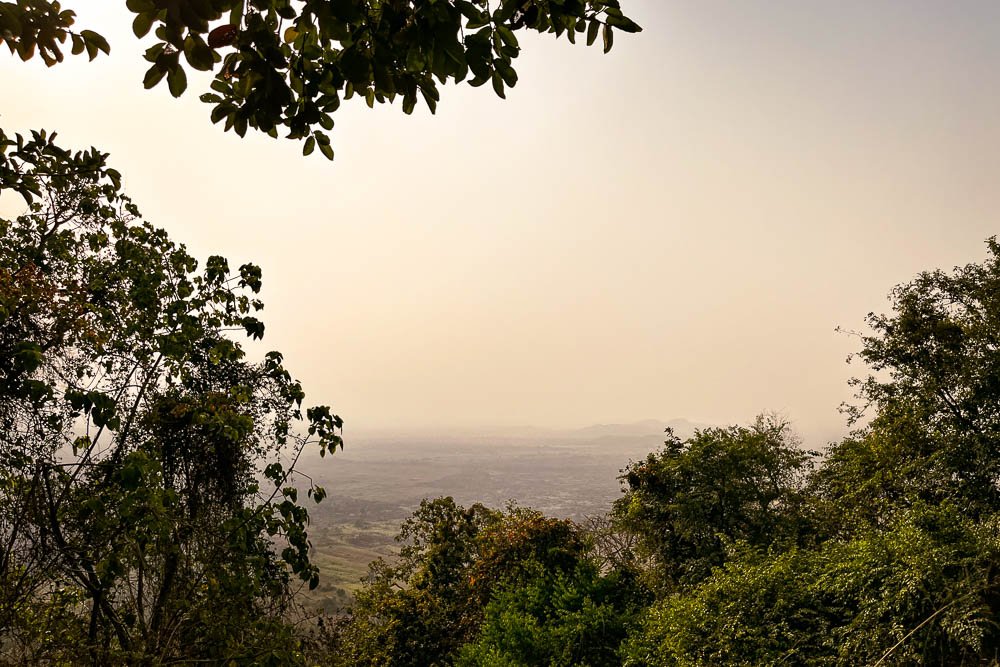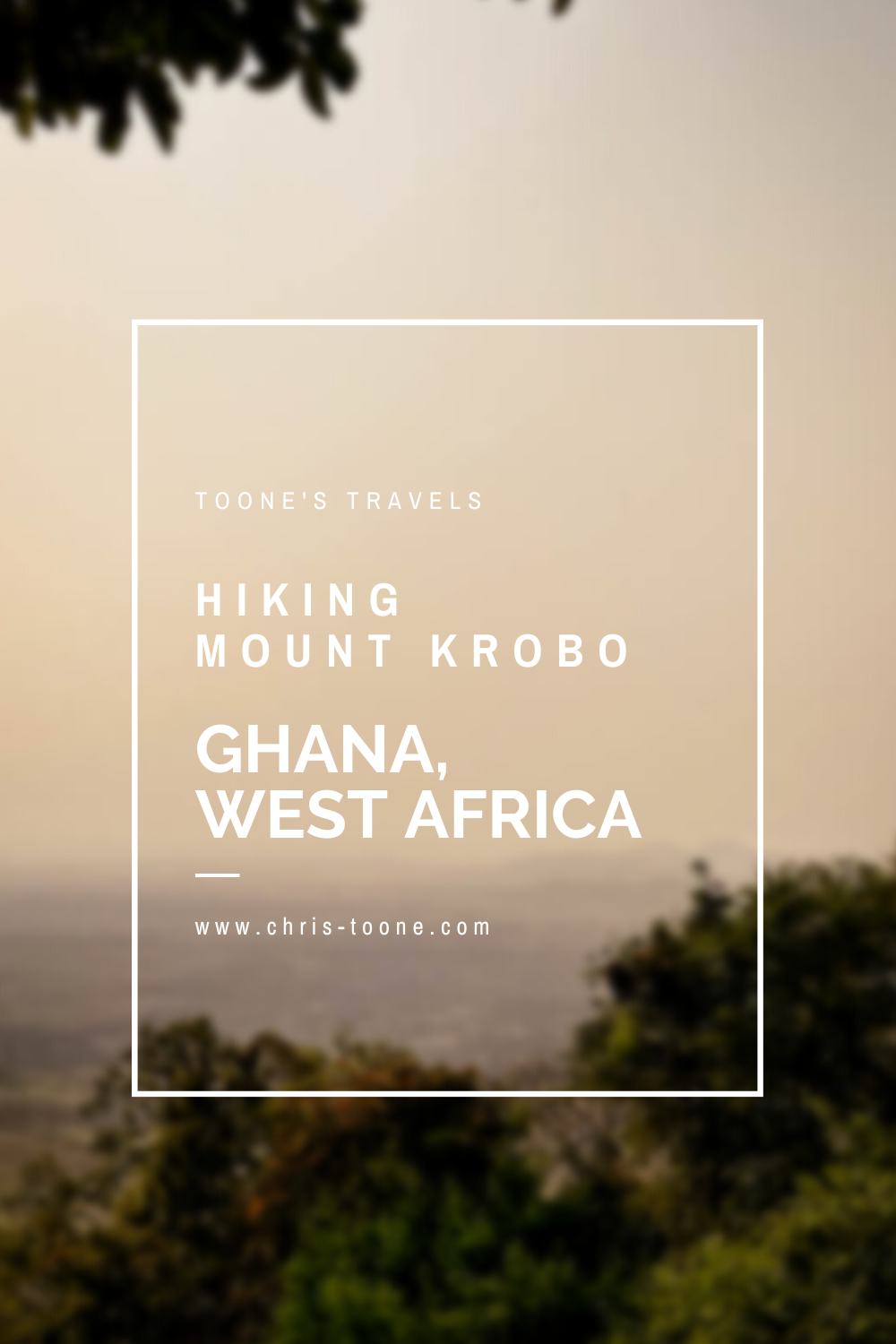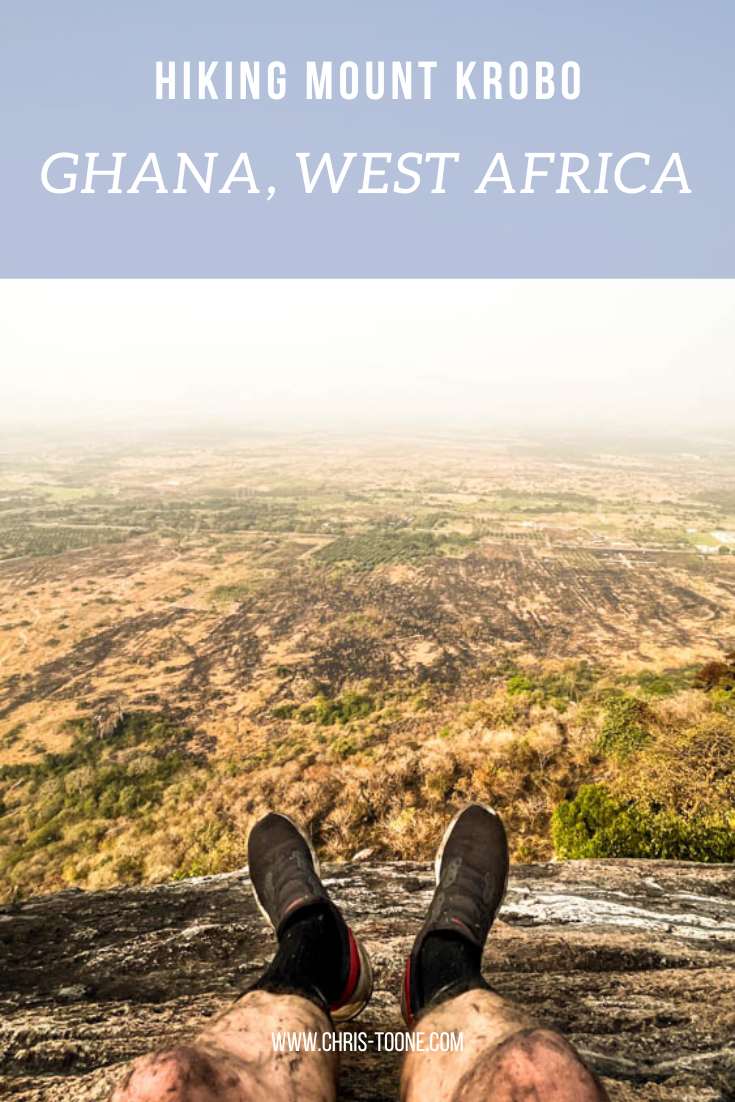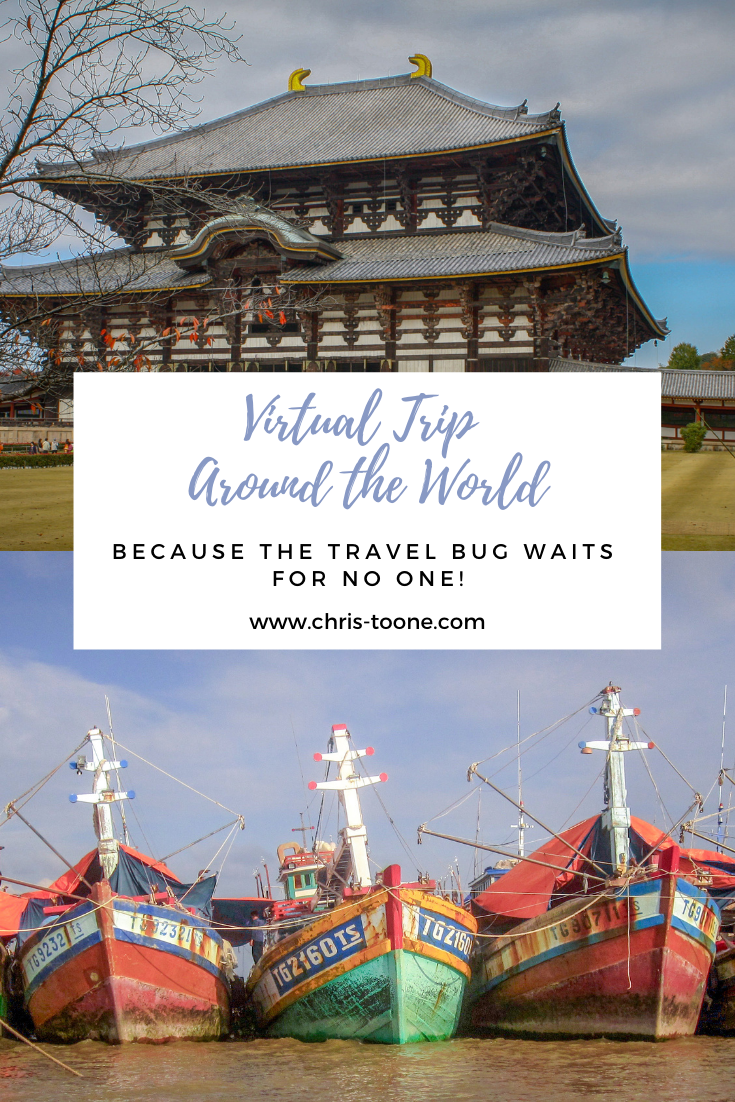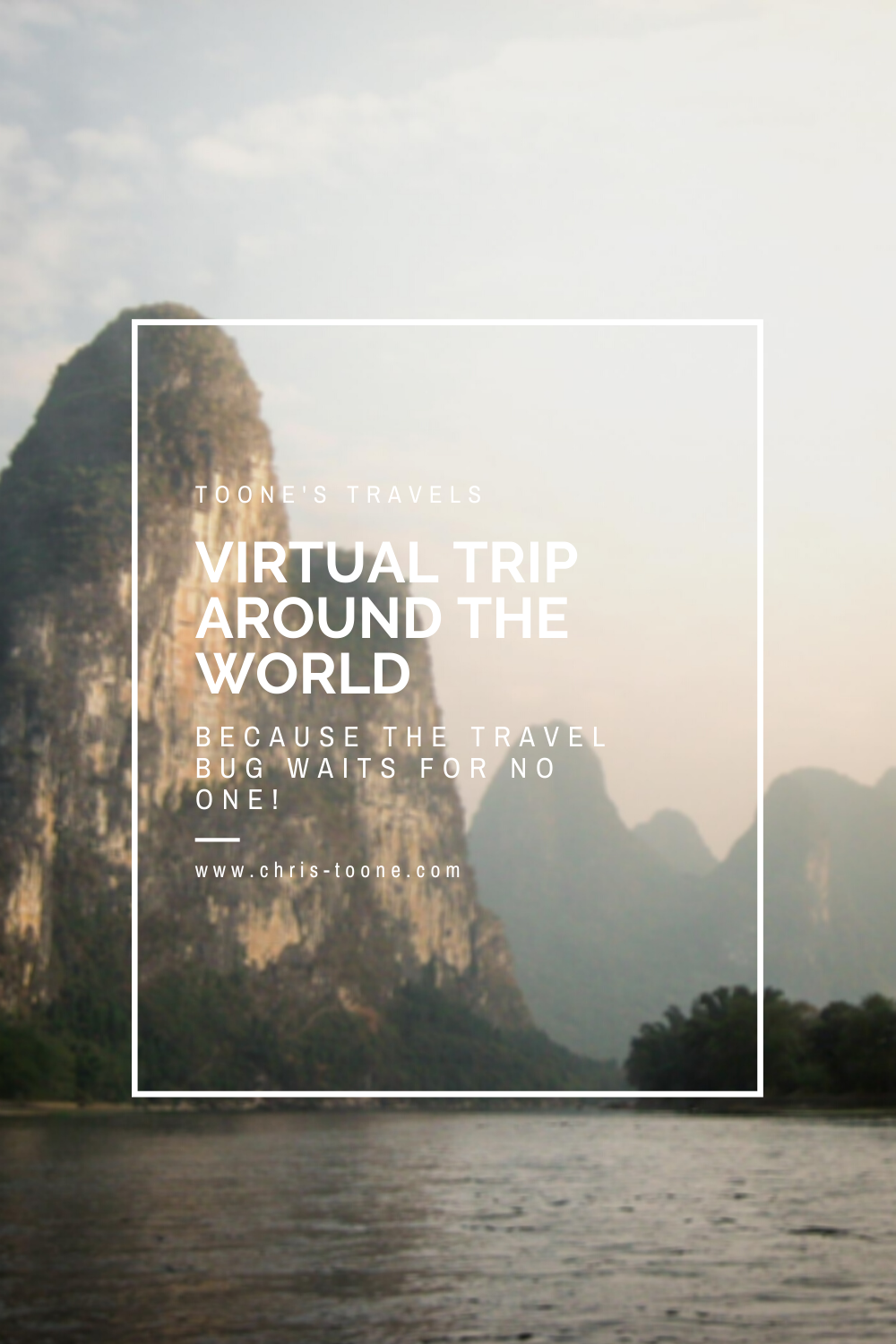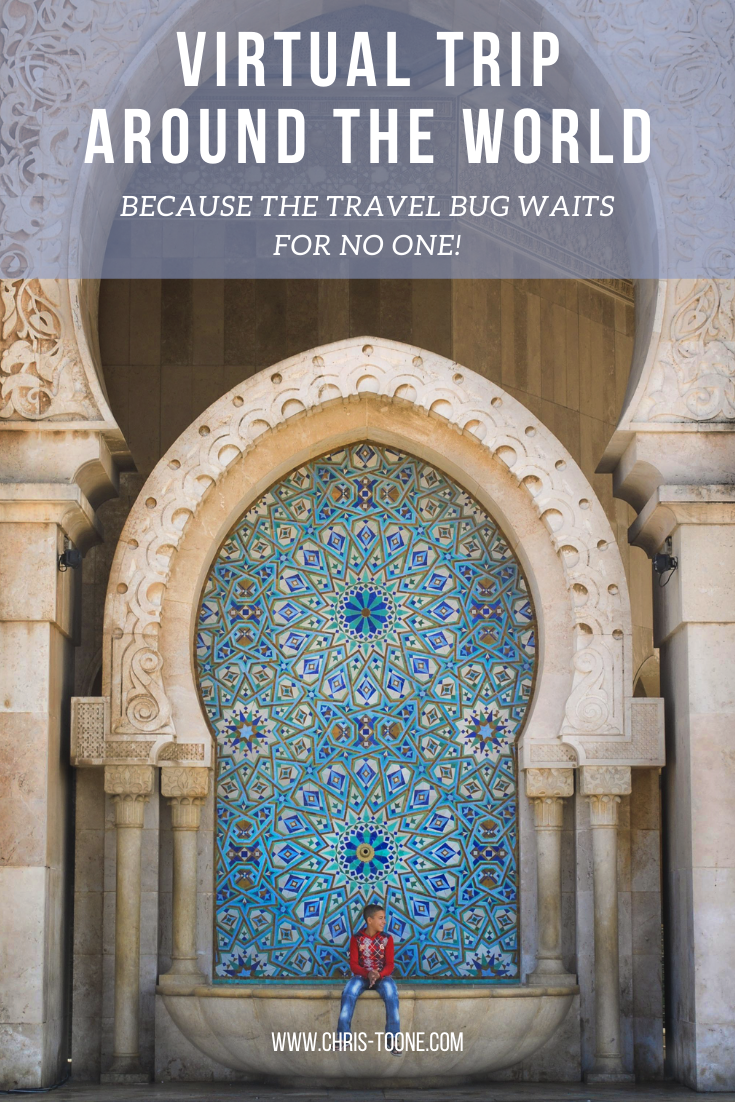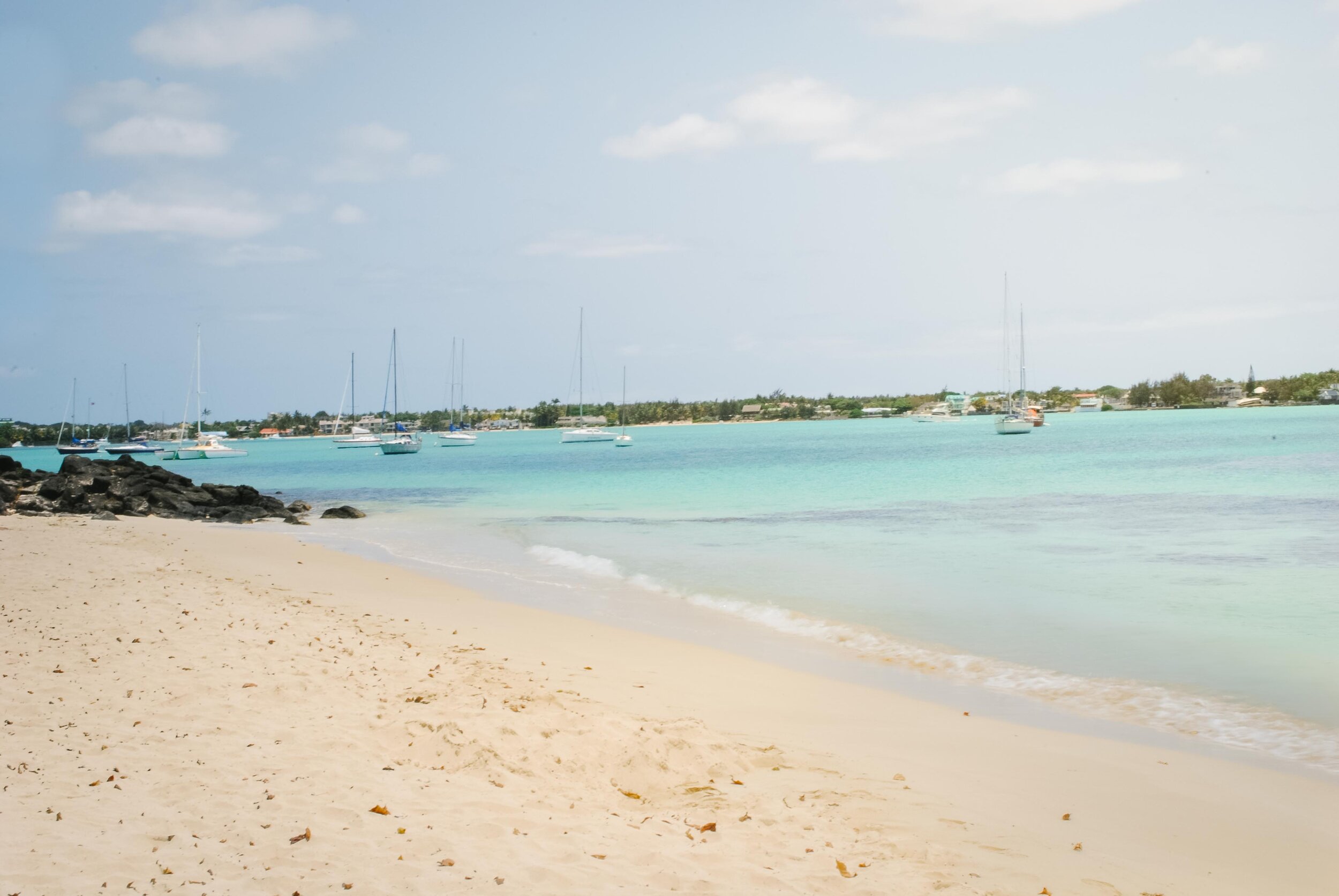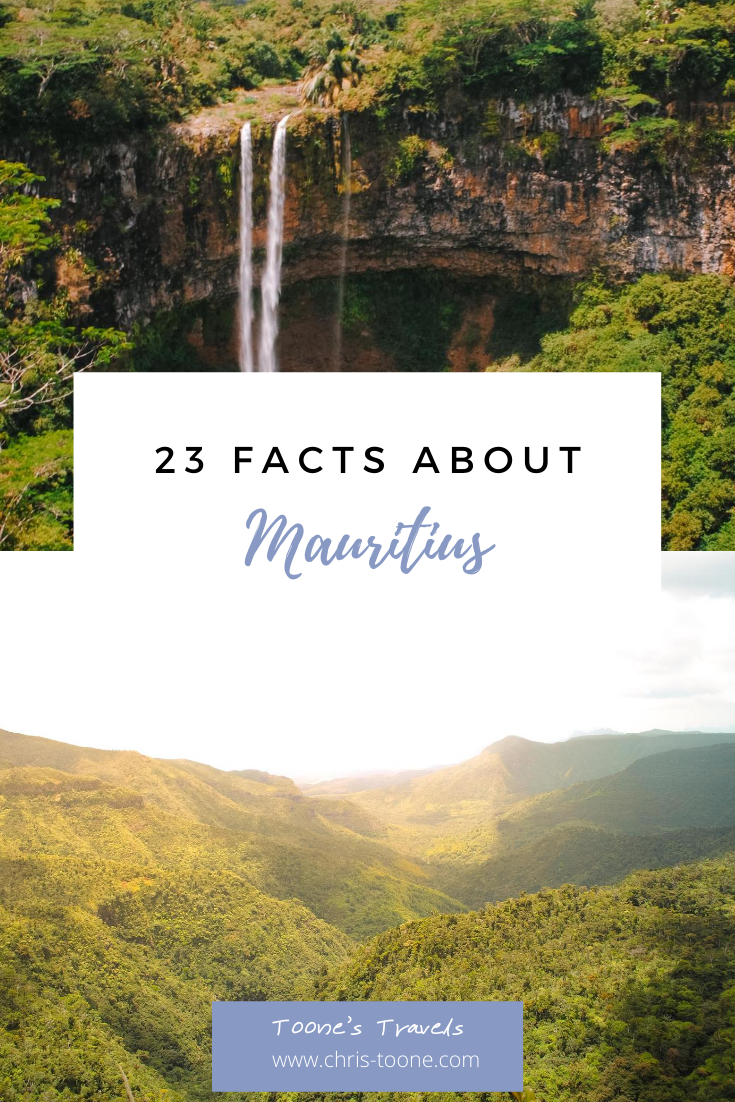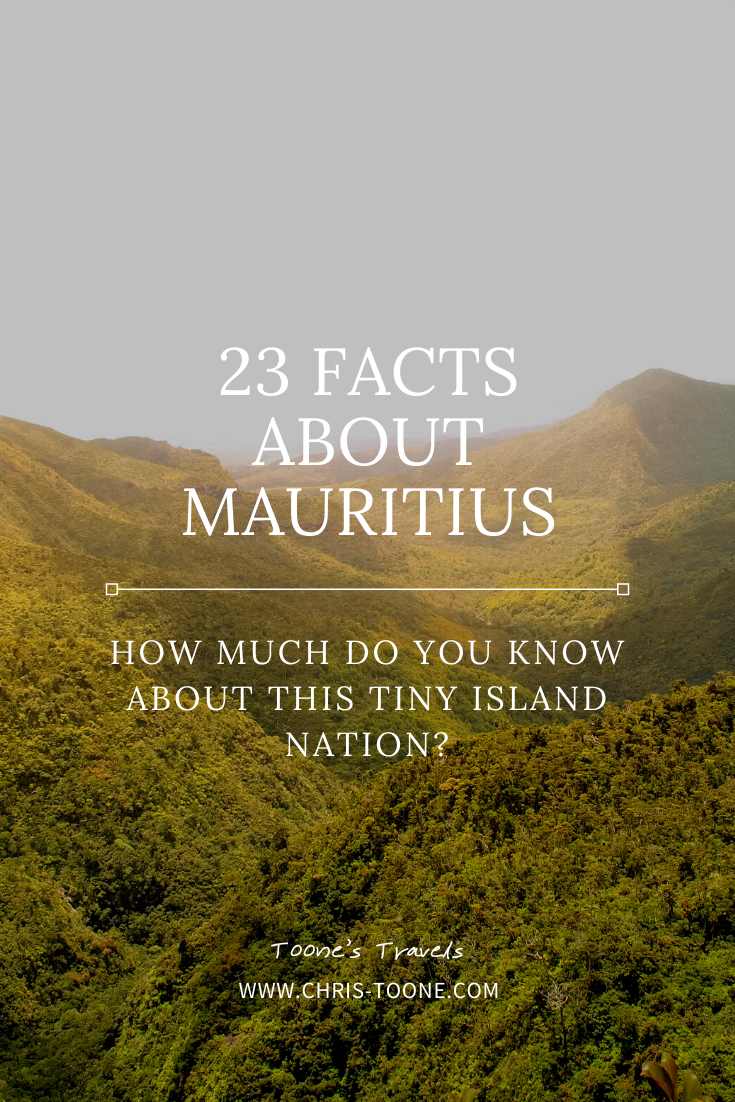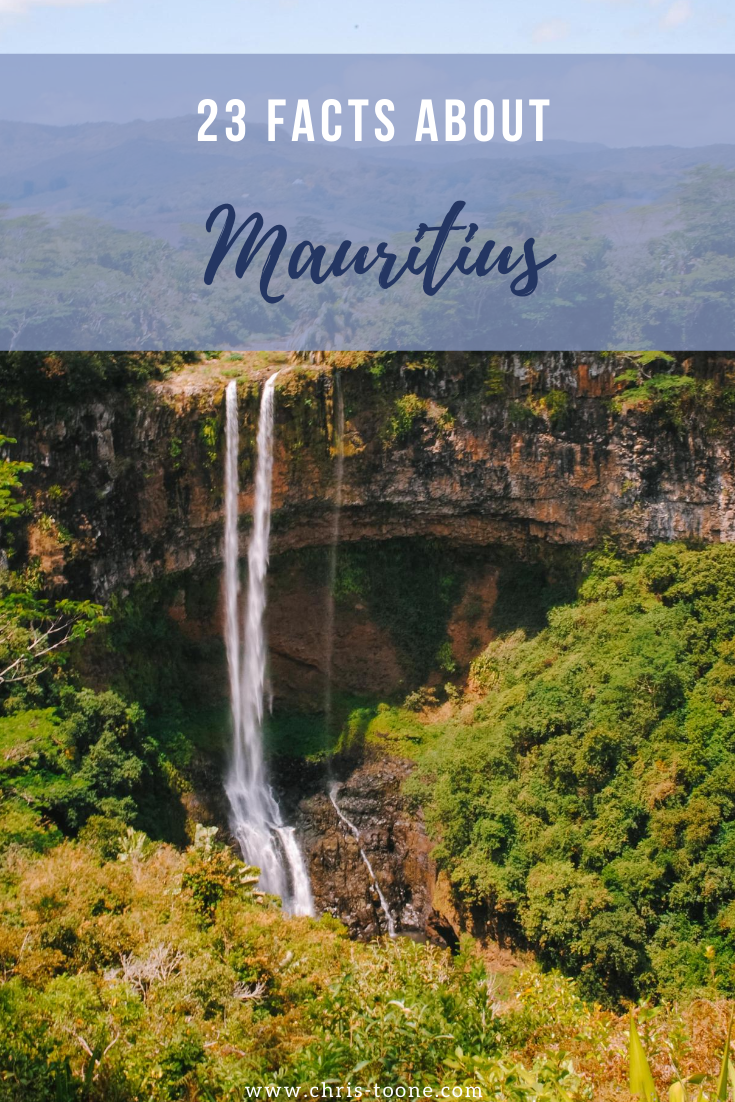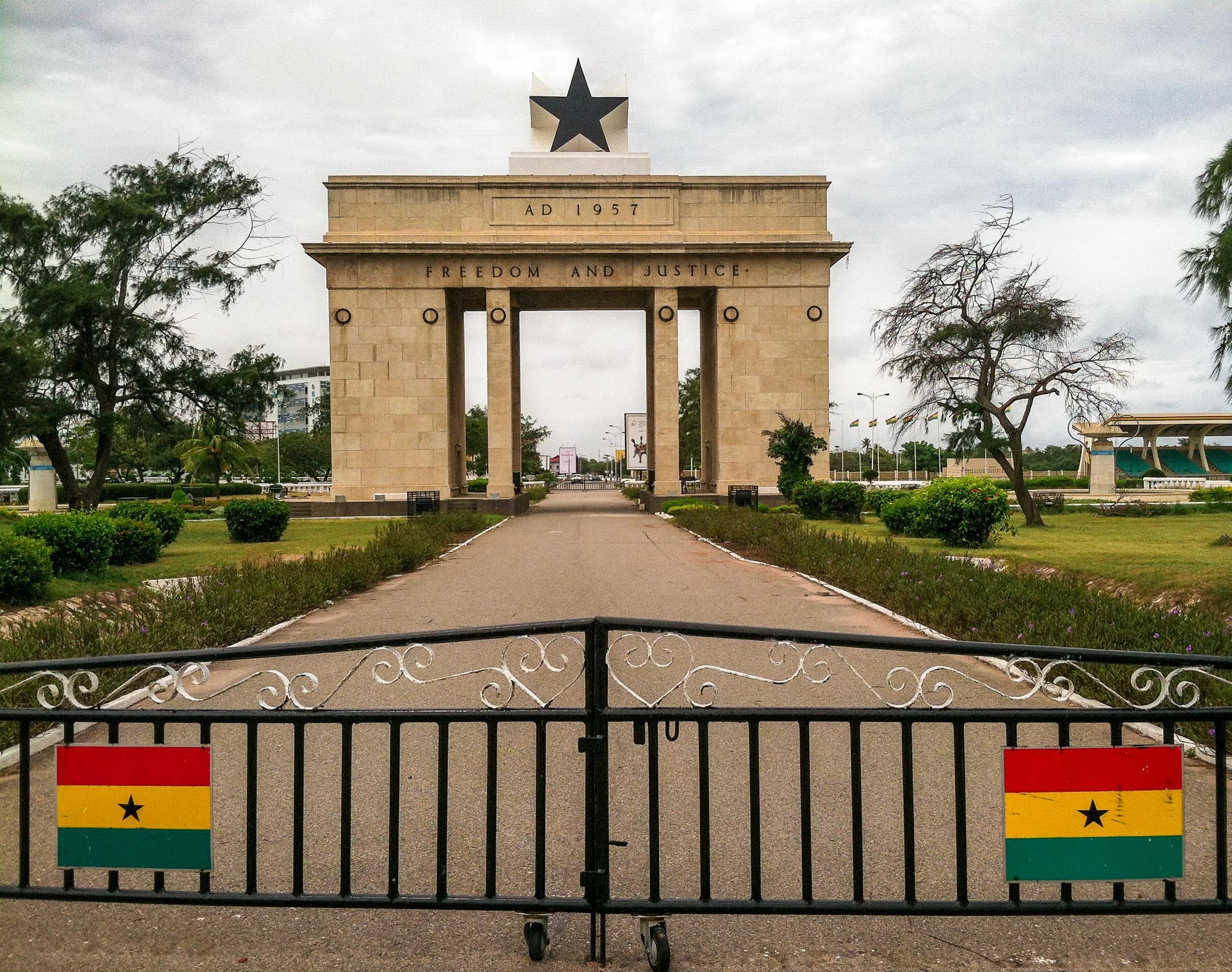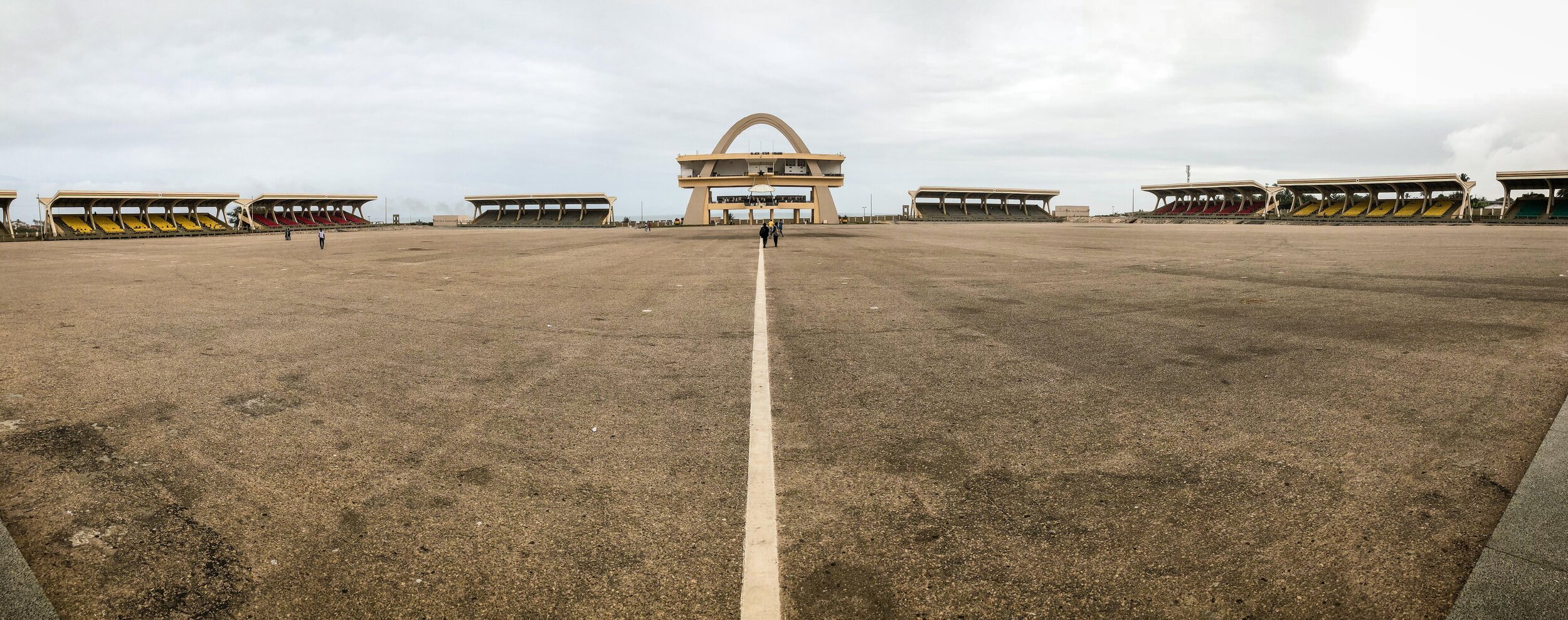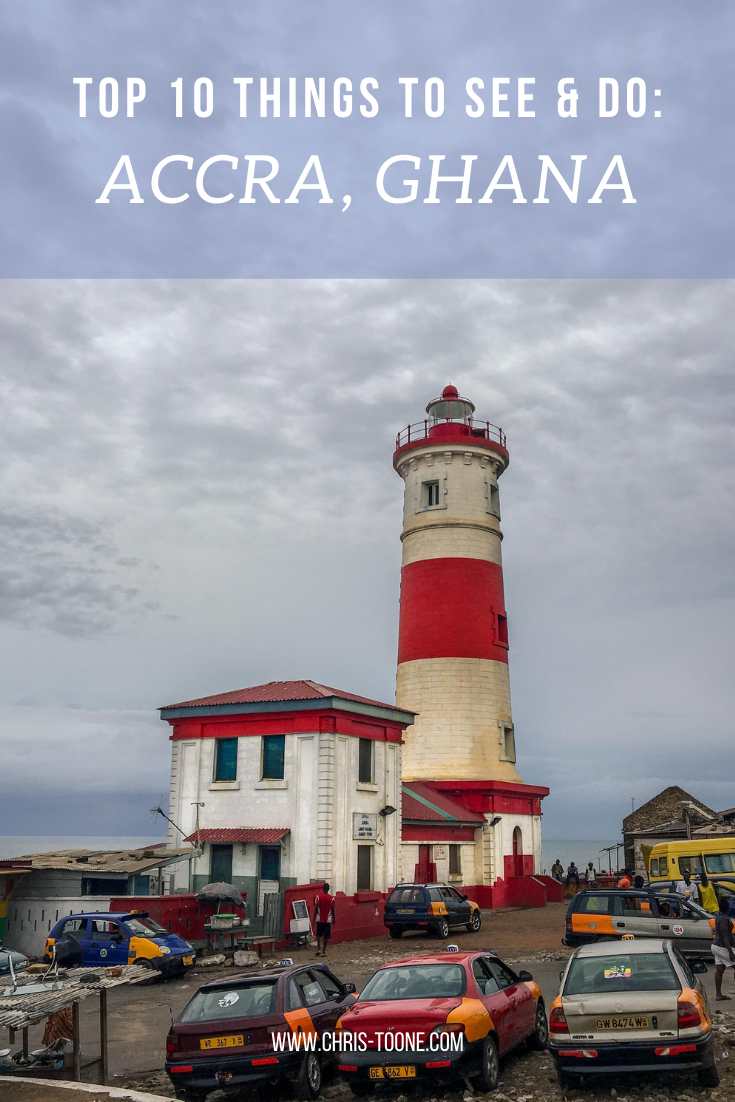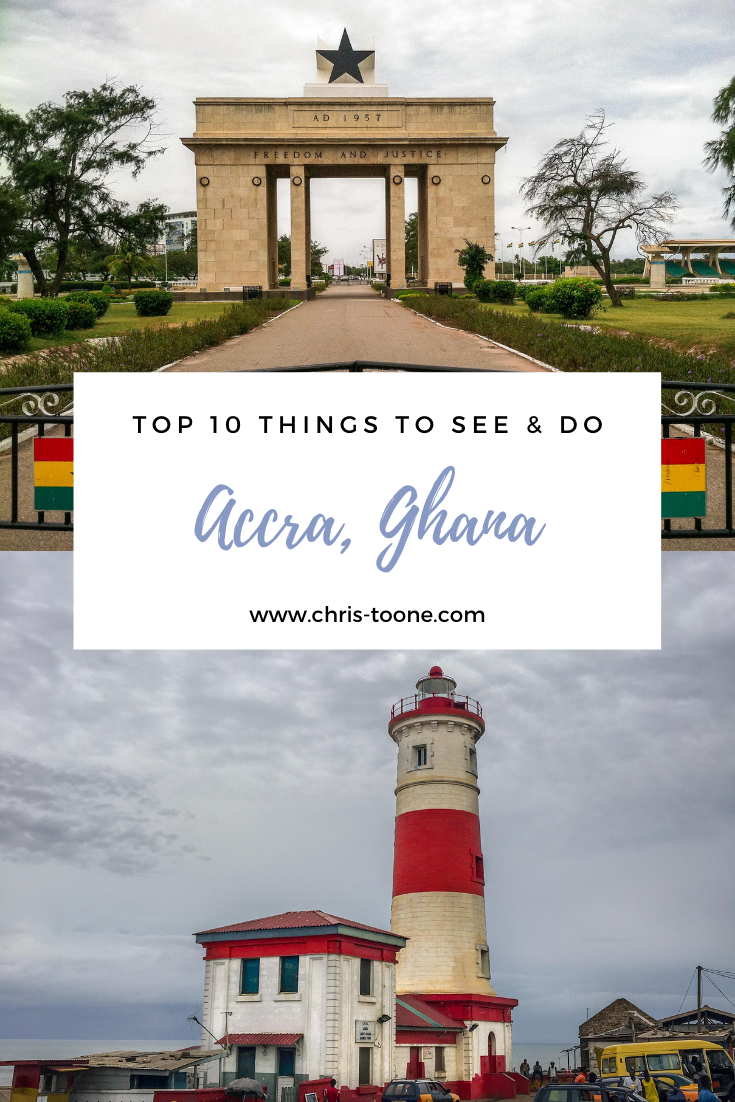Hiking Mount Krobo, Ghana: Everything You Need to Know
Within a week of regularly driving the Tema-Akosombo road, it was clear that one mountain towered above the rest: cue Mount Krobo. After weeks of trying to arrange a hike the plans finally panned out. Here’s everything you need to know for a great half-day adventure…
Please note: all info below is accurate as of January 2023
Having been to Ghana on and off for the past decade, my trips were isolated to the same stretch of road between Accra, Kumasi, and Berekum leaving the Eastern Region of the country an untouched landscape full of adventure.
Within a week of regularly driving the Tema-Akosombo road, it was clear that one mountain towered above the rest: cue Mount Krobo. After weeks of trying to arrange a hike the plans finally panned out.
Here’s everything you need to know for a great half-day adventure!
Hiking the base of Mount Krobo, Ghana
A BRIEF HISTORY OF MOUNT KROBO
Dating back to the 16th century, the Dangme people of East Africa up and left their settlements, deciding to migrate towards present day Ghana. Once they reached West Africa, the group made friends with other ethnicities as they passed through, including the Ewe people.
As the trek progressed, a split from the Ewe became necessary and it was at this point in their journey that the Krobo refer to as Lorlorvor, meaning “love has ended.”
The Krobo people crossed the Volta River in continued search of a new settlement when they found themselves surrounded by the Akan and Guan ethnic groups. Fear of these perceived threats forced them to climb an isolated mountain on the plains near the river, known today as Mount Krobo.
Having experienced first-hand the difficult climb as a natural safety measure they began to establish their new settlement, quickly erecting multi-story homes and irrigation systems.
As the Krobo population continued to expand, the colonial government found it increasingly difficult to monitor and control the settlement. As a result in 1892, the British rulers gave the community 3 days to leave the mountain. The people fled with as much as they could carry and what was left behind was destroyed.
To this day, the Krobos continue to organize a pilgrimage to pay homage to their ancestors.
GETTING THERE
Not the most conveniently located attraction in Ghana, the easiest way to access Mount Krobo is by taking a tro-tro or taxi to Akuse Junction. From here, the unmarked trailhead is 3.1km south on the left side of the road, just past Kings and Queens Teaching Hospital.
Although possible to walk from the intersection, it’s not advisable given the volume of speeding traffic along the Tema-Akosombo Road.
If all else fails, the trailhead is pinned below, and the path can be seen from Google satellite images.
WHEN TO GO
For sweeping views across the plains, it’s best to avoid the Harmattan season which runs from November to March as the horizon is often laden with dust that obscures the landscape.
HELPFUL INFO
Some reports indicate a 7.50 GHC entrance fee to a local farmer, but we did not encounter anyone. It’s also vital to bring plenty of water and sunscreen as the mountain is exposed most of the ascent.
Other things to consider:
A reliable and comfy day pack
Pack snacks or buy fruit from the stands at Akuse Junction
Wear shoes with plenty of tread
Wear long, lightweight pants
Bring bug spray
Plan for 4 hours, round trip
Walking poles
Start early in the morning to avoid the hottest part of the day
A glimpse of the landscape from the top of Mount Krobo, Ghana
WHAT TO EXPECT
Once turning off the Tema-Akosombo Road, the hike starts flat as the dirt path winds through the brush and approaches the eastern face of the mountain. The tree-lined trail concludes at a clearing with a shelter, washrooms, and a beautiful baobab tree.
From here, the trek begins to quickly ascend through the trees. Remember to pace yourself and stay hydrated – it’s not a race to the top. Take advantage of the many lookouts along the way for some well-deserved rest.
On this particular day, the brush had just been burned along the trail, so the breaks were a welcomed reprieve from breathing in the Harmattan dust and ashy air.
Eventually, the path opens up to ruins from the Krobo civilization that once dwelled on the mountain. We wandered around the old foundations of houses while uncovering clay pots that had slowly been reclaimed by the Earth.
Ruins of the Krobo settlement
At this point, it is not much farther to the first vista that looks west over the plains. Once you have had a chance to take in the sweeping landscape, continue walking north along the top of the mountain to reach the trail's end, marked by a metal cross.
Relax, refuel, and enjoy the views.
The easiest and safest thing to do is treat Mount Krobo as an out-and-back trail. There is no loop however a local Ghanaian we met at the peak insisted we try the “shortcut” down. This included descending a solid rock wall into a ravine and galloping down the western face of the mountain that we had previously labeled “too steep to climb” as we reached the trailhead from the main road that morning.
Truth be told we would never have found this path without a guide, so best to descend back through the Krobo ruins.
IMPORTANT NOTES
Here’s what I wish we would’ve done differently:
Pin the location of the trailhead and have the taxi stop at the mark. We got out too early at Akuse Junction and had to walk the 3.1km down the Tema-Akosombo road
Bring hiking shoes. I used runners and immediately regretted my decision as we started the steep descent through the ashy brush
Wear long pants. The trail is clearly defined, but that doesn’t mean brush doesn’t get in the way. I left the mountain with scrapes and cuts up and down my legs. Nothing serious, but next time I’ll pack pants
Get the taxi driver’s phone number to call on the descent and meet at the end of the trailhead to avoid walking back to Akuse Junction for a ride
Views from the top of Mount Krobo, Ghana
All in all, it made for a great morning adventure. Be sure to do a little digging on the Krobo people before the hike. Knowing the history of the mountain made the experience meaningful beyond the beautiful fauna and striking landscape.
Have you hiked Mount Krobo before or know of other adventures you want me to experience in Ghana? Leave a comment below and let’s keep exploring!
As always, thanks for reading & happy travels.
Sharing is caring! Pin this post for later.
Virtual Trip Around the World: Because the travel bug waits for no one!
It's no secret that the travel bug waits for no one. Follow along on my Semester at Sea itinerary from 2010 and travel the world from the comfort of your couch. 110 days, 12 ports, 10 countries, and 4 continents later, you'll have traveled around the world and be equipped with the knowledge you need to plan your next great adventure!
It’s no secret that this past year has been full of difficulty and challenges, especially for those of us that have perpetually itchy feet and are used to exploring new places. Despite it all, it’s important to continuously remind ourselves that a global pandemic isn’t forever and the time will come when we can get back on those dusty, off the beaten path roads around the world.
Until it’s safe to do so, we’ll have to settle for curbing our wanderlust through virtual trips, books, and documentaries.
The below itinerary is what I was fortunate enough to follow while studying abroad on Semester at Sea in 2010. Consisting of 110 days, 12 ports, 10 countries, and 4 continents, this post is less about my personal experience and more about taking you on a trip around the world to discover something new because, after all, the travel bug waits for no one!
Grab your favorite first-class cocktail, recline back in your seat, and let’s take off!
Interested in learning more about my Semester at Sea experience? Check out this post:
CANADA
Official Languages: English, French | Area: 9,970,610 sq-km | Population: 37.59 million | Capital City: Ottawa | Currency: Canadian Dollar
From sea to shining sea, experience everything from the rugged Atlantic coast in Newfoundland to the foggy Pacific in British Colombia. Get lost exploring the bustling cities of Toronto, Montreal, and Vancouver or push north into the Yukon Territory and chase the northern lights during the winter months. As such a large country, it’s hard to comprehend all that Canada encompasses.
SEE & DO:
Get soaked on the Maid of the Mist at the 8th Wonder of the World, Niagara Falls.
Eat your way through Toronto’s diverse neighborhoods. Over 250 ethnicities and 170 languages are represented in the region.
Explore Quebec City’s Old Town, a registered UNESCO Heritage Site.
Be humbled by the awe-inspiring Canadian Rockies and visit the towns along the way such as Lake Louise, Banff, or Kananaskis.
Experience the way of life along the North Atlantic Ocean in Newfoundland and scope the icebergs, cliffs, and more.
Get your camera ready to capture the abundance of wildlife, including moose, black bears, and grizzly bears.
EAT: Poutine. A glob of french fries, cheese curds, and gravy sauce, this is sure to keep you warm during the blistering winters!
DRINK: Molson. Not only is it the oldest beer in Canada, it’s also the oldest brewery in North America (1786).
WATCH: Montreal, Samantha Brown’s Places to Love S1E12 (PBS).
ONE WORD: “Eh”. Canadians have not one, not two, but ten popular functions of the word. Pretty neat, eh?
KNOWN FOR: Hockey, cold winters, diversity, Tim Hortons, rocky coasts, abundant wildlife, friendly people.
RANDOM FACT: Regina, the capital of Saskatchewan, sits along the geographical center of North America.
Parliament Building, Ottawa
Canadian Rockies
Tourists ice skate on the famous Lake Louise
SPAIN
Official Language: Castilian Spanish | Area: 40,525,002 sq-km | Population: 46.94 million | Capital City: Madrid | Currency: Euro
Spain is high on food and social scenes, so much so that it’s rare you’ll never be steps away from a glass of sangria and a table full of tapas. The country is overflowing with vibrant culture and intricate architectural wonders. Wander, eat, sleep, repeat, and don’t forget to loosen those belt buckles! You’ll thank me later.
SEE & DO:
Bask in the glorious view of the world-famous Alhambra in Andalucía.
Indulge in an evening full of sangria and tapas hopping between bars.
Get lost in the rhythm of a live flamenco performance.
Gawk at the intricate tiles of the Plaza de España.
Step back in time and watch professional Matadors elegantly maneuver around charging balls. Note: watching the bulls die isn’t for everyone. Do your research ahead of time and know what to expect.
Relax on the pristine beaches and explore the secluded coves of Mallorca.
Pack a bag and hike a section of the famed Camino de Santiago.
EAT: Paella, but be sure to wash it down with a couple of delectable churros.
DRINK: Sangria.
WATCH: Spain, Anthony Bourdain: No Reservations S4E14.
ONE WORD: Siesta. It’s no joke here!
KNOWN FOR: Flamenco, delicious tapas, siesta and fiesta, Pablo Picasso, Salvador Dali, Antoni Gaudi.
RANDOM FACT: There are several words in Spanish with no direct translation, including Friolero, that person whose fingers are always white while yours are fine, and Pardo, the color between grey and brown.
A matador narrowly evades a charging bull in Sevilla
MOROCCO
Official Language: Arabic | Area: 504,782 sq-km | Population: 36.03 million | Capital City: Rabat | Currency: Moroccan Dirham
Located a stone’s throw away from the Spanish coast, Moroccan culture is seamlessly blending the new with the old. The ancient medina walls offer a glimpse into past kingdoms while the streets of Casablanca are brimming with a new generation of chic youth.
SEE & DO:
Fine tune your bartering skills at the Djemaa el-Fna square in Marrakesh. Stick around after the sun goes down and feast at one of the open-air food carts.
Get lost in the ancient Medina of Fez and follow your nose to one of the ancient leather tanneries.
Pay a visit to a local hammam, a traditional Moroccan bath.
Trek through the Atlas Mountains and immerse yourself in the Berber culture.
EAT: Couscous (crushed and steamed balls of durum wheat and topped with heaps of vegetables or meat).
DRINK: Mint tea, a staple of the Moroccan culture.
WATCH: Marrakesh with Chrissy Teagen, Breakfast Lunch & Dinner S1E2 (Netflix).
ONE WORD: Labas, how are you?
KNOWN FOR: Sahara Desert, tagine, Chefchaouen (a village where very house is painted blue), abundance of spices, Atlas Mountains.
RANDOM FACT: The minaret of Casablanca’s Hassan II Mosque rises to 210m and is the largest in the world while the mosque itself holds 25,000 worshipers at prayer.
The Hassan II Mosque’s minaret towers over visitors
A boy sits at the Hassan II Mosque in Casablanca
GHANA
Official Language: English | Area: 446,550 sq-km | Population: 29.77 million | Capital City: Accra | Currency: Cedi
Commonly touted as "Africa for beginners," tourists love visiting Ghana because of its laid-back atmosphere, colorful culture, and ease of travel. To truly understand the people, pay a visit to one of the several slave castles that dot the coast and learn how the country became the first African nation to achieve independence in 1957.
SEE & DO:
Wander through the canopy at 40m above the forest floor in Kakum National Park.
Walk with elephants at one of Africa’s cheapest safaris in Mole National Park.
Soak up the sand between your toes and sleep in a thatched hut at Maranatha Beach Camp.
Get turned around in Accra’s Makola Market, but somehow still find everything you need.
Allow yourself to be overcome with emotion at one of Ghana’s forts as you stare at the ominous “Door of No Return” where slaves once left their homeland behind.
Experience all that Kejetia Market, West Africa’s largest, has to offer in Kumasi.
EAT: Fufu and bofrot (Ghana’s version of a donut).
DRINK: Palm wine from a villager’s homemade stash.
ONE WORD: Hani-Wodzo, let’s dance!
KNOWN FOR: Coastal forts, high-life vibes, beautiful beaches, colorful culture, “Africa for beginners”, friendly people.
RANDOM FACT: 20% of all cocoa beans come from Ghana, making this West African nation the second largest producer in the world.
A visitor carefully navigates the swinging canopy walk at Kakum National Park
Maranatha Beach Camp, Ghana
SOUTH AFRICA
Official Languages: Afrikaans, Venda, Tsonga, English, Southern Soto, Swati, Zulu, Tswana, Ndebele, Xhosa, Northern Soto | Area: 1,219,9090 sq-km | Population: 57.78 million | Capital Cities: Pretoria (administrative), Bloemfontein (Judicial), Cape Town (Legislative) | Currency: Rand
It wasn’t until 1994 that a democratically-elected government took control of South Africa, making it a relatively young country in regards to independence. The effects of the previous regime’s ruthless apartheid policy can still be felt throughout the nation, but the people are determined to rebuild a better tomorrow.
SEE & DO:
Hike to the top of Table Mountain and Lion’s Head Peak for stunning views over Cape Town.
Take the ferry to Robben Island and learn how apartheid ravaged the country until 1994 when the first democratic government was formed.
Bushwalk through Kruger National Park and spot elephants and zebras at dawn.
Travel to the Cape of Good Hope, South Africa’s southern tip. Be sure to make time to visit the penguins at Boulder Beach as well.
Trace the path of the FIFA 2010 Soccer World Cup, the first and only held on African soil.
Need more trip ideas? Check out these activities!
EAT: Vetkoek, a multi-use pastry commonly stuffed with minced meat and eaten as a savory snack or topped with jam for dessert.
DRINK: Wines from the Cape Winelands, Springbok shot (paying homage to South Africa’s national rugby team, the shooter combines creme de menthe and Amarula).
READ: Nelson Mandela’s inspiring autobiography, Long Walk to Freedom, and Archbishop Desmond Tutu’s emotional account of the Truth & Reconciliation Committee as the nation embarked on a long and painful healing process after apartheid, No Future Without Forgiveness.
WATCH: Cape Town, Somebody Feed Phil S2E5 (Netflix)
ONE WORD: Ubuntu (I am, because we are; a testament to the interconnectedness of humanity).
KNOWN FOR: Table Mountain, Springboks Rugby, Kruger National Park, Nelson Mandela, Archbishop Desmond Tutu, freedom fighters, unity.
RANDOM FACT: There are more than 2,000 shipwrecks off the coast of South Africa that date back 500 years.
Lion’s Head Peak at Sunset, Cape Town
MAURITIUS
Official Language: English, French, Creole | Area: 2,040 sq-km | Population: 1.265 million | Capital City: Port Louis | Currency: Rupee
Frequently overshadowed on a map by its neighbor, look for a small dot to the east of Madagascar and you’ll find Mauritius. A tiny island full of pristine beaches, creole cuisine, and stunning highlands, it’s a slice of paradise in the Indian Ocean.
Craving to learn more about Mauritius?
Check out this post:
SEE & DO:
Visit the cascading Chamarel Falls and mesmerizing Seven Colors of the Earth.
Hike through Black River Gorge National Park.
Relax on the beaches of Grand Baie.
Wander through the lively Port Louis Market.
Walk around the Sir Seewoosagur Ramgoolom Temple.
EAT: Camarons (freshwater prawns in spicy sauce).
DRINK: Phoenix Beer from Mauritius’ largest brewery.
ONE WORD: Kreol Morisien (Welcome).
KNOWN FOR: Phoenix beer, beach resorts, land of the lost dodo bird, sugar cane plantations, religious tolerance, island vibes.
RANDOM FACT: Electricity from sugar cane accounts for 14% of the island’s needs.
Seven Colors of the Earth
Black River Gorge
INDIA
Official Languages: English, Hindi, Bengali, Telugu, Marathi, Tamil, Urdu, Gujarati, Malaalam, Kennada, Oriyu, Punjabi, Assamese, Kashmiri, Sindhi, Sanskrit | Area: 3,287,263 sq-km | Population: 1.353 billion | Capital City: New Delhi | Currency: Indian Rupee
India often feels like a world of its own with so much diversity between north, south, east, and west. Traveling here requires stepping out of your comfort zone with all of the sights, sounds, and smells constantly overwhelming the senses, but it’s worth the effort.
SEE & DO:
Float down the Ganges River at sunrise in Varanasi and observe the morning cleansing and cremations along the ghats on shore.
Stand speechless at the entrance to the Taj Mahal.
Ride an overnight train for a true Indian experience.
Navigate rush hour in the gridlocked cities of Mumbai and Kolkata.
Catch a glimpse of Mt. Everest in Darjeeling.
EAT: Chaat (a savory snack served at roadside stalls).
DRINK: Scalding hot chai tea, lassy (a refreshing sweet or salty yogurt shake).
READ: Around India in 80 Trains by Monisha Rajesh.
ONE WORD: Dayaf, baya, sidha (right, left, straight, because a trip to India almost certainly requires directing your rickshaw).
KNOWN FOR: Holy cows, Taj Mahal, Gandhi, Himalayas, towering temples, Bollywood, hectic driving, Holi Festival.
RANDOM FACT: The Taj Mahal’s dome was covered in bamboo scaffolding in 1942 as a way to protect and disguise it from German bomber planes during World War II.
Mid-day viewing of the Taj Mahal with the masses.
SINGAPORE
Official Languages: Chinese, Malay, Tamil, English | Area: 697 sq-km | Population: 5.64 million | Capital City: Singapore | Currency: Singapore Dollar
Careful not to break the rules here as it’s known for strict regulations. Even chewing gum finds itself on the list of banned substances, but don’t be deterred. Singapore might be small in size, but it’s a cultural melting pot of food and people.
SEE & DO:
Wander the Waterloo St. temples and markets.
Soak up the sights, smells and sounds of Little India, Singapore’s ode to the bustling subcontinent.
Swim high above the city at one of the most famous infinity pools in the world, located at the Marina Bay Sands Hotel.
Enjoy a cold drink at Clarke Quay, a popular riverside hangout with plenty of bars and restaurants.
Take in a bird’s eye view aboard the Singapore Flyer, the city’s iconic ferris wheel.
Check out these guides for a comprehensive list of things to do in Singapore!
EAT: Any and all hawker food. Singapore is a place where cultures converge, so it’s only fitting that you try all it has to offer.
DRINK: Tiger Beer, Singapore Sling.
WATCH: Singapore, Somebody Feed Phil S4E3 (Netflix).
ONE WORD: Kiasu. This represents a person’s fear of losing, something that is a staple of sorts within the population.
KNOWN FOR: “No Durian” signs, strict laws including hefty fines for spitting and littering, Tiger Beer.
RANDOM FACT: Singapore is the world’s largest exporter of exotic aquarium fish.
Downtown Singapore
VIETNAM
Official Language: Vietnamese | Area: 331,210 sq-km | Population: 95.54 million | Capital City: Hanoi | Currency: Dong
Organized chaos is the best way to describe the buzzing streets of Saigon as motorbikes whiz by. For a country ravaged by war, the Vietnamese people are a smiley bunch that are eager to show their homeland to everyone and anyone willing to visit. Fresh food, friendly faces, and never a dull moment; what more do you need?
SEE & DO:
Slurp a steaming bowl of pho from the comfort of a rickety plastic stool on the streets of Ho Chi Minh City.
Hire a local fisherman and float the back channels of the Mekong Delta.
Play a game of human frogger in the cities as you try to dodge motorbikes from all directions before giving up and riding one yourself.
Explore the picturesque terraced rice fields in Sapa.
Live on a boat amidst the towering rock formations of Ha Long Bay.
EAT: Pho, Goi Cuon (spring roll).
DRINK: Cafe sua da (Vietnamese iced coffee, also known as crack coffee).
WATCH: Vietnam, Anthony Bourdain: Parts Unknown S4E4.
ONE WORD: Thu’o’ng (th-uong) which describes something that is more than love.
KNOWN FOR: Conical hats, scooter mayhem, Mekong Delta, pho, “same same but different”.
RANDOM FACT: According to ancient Vietnamese folklore, Vietnamese people are descendants of dragons.
Boats docked along the Mekong Delta
A fisherman navigates the offshoot rivers of the Mekong Delta
HONG KONG
Official Languages: Chinese Cantonese, English | Area: 1,110 sq-km | Population: 7.45 million | Capital City: Central | Currency: Hong Kong dollar
Most recently, Hong Kong has created headlines around the world as tensions with China have reached a boiling point. Needless to say, the tiny island is living through a turning point in its history with new, more restrictive regulations. There’s only one question: what will the outcome be?
SEE & DO:
Explore Sham Shui Po, one of the oldest districts in Hong Kong that’s known for it’s textile industry.
Hop aboard the iconic Star Ferry for some of the best views of the city’s skyline from Victoria Harbour.
Reach the top of “The Peak”, the city’s best birds eye view, and marvel at the sheer magnitude of the metropolis below.
Be hypnotized by the extensive evening light show of downtown’s buildings.
EAT: Street food. Widely available, affordable, and a great snack for exploring. Some popular ones include curry fish balls, pineapple buns, and egg tarts.
DRINK: Red bean ice (red beans, sugar syrup, and milk).
WATCH: Hong Kong, Samantha Brown’s Places to Love S2E1 (PBS).
ONE WORD: Gay-dor-cheen-ah (how much is this?) because let’s face it, Hong Kong isn’t the cheapest place to visit in the world.
KNOWN FOR: Skyline views, Victoria Harbour, dim sum, luxury shopping, and political strife with China.
RANDOM FACT: Hong Kong means “fragrance harbor” in Cantonese.
Hong Kong as seen from the top of the The Peak
CHINA
Official Language: Mandarin | Area: 9, 596,961 sq-km | Population: 1.39 billion | Capital City: Beijing | Currency: Chinese Yuan
China is an intellectually intriguing nation to visit. On the surface, the vast country is filled with stunning scenery found nowhere else in the world, but dig a little deeper and the government’s harsh policies rear their ugly head. Where do you fall on this spectrum? One must visit to find out!
SEE & DO:
Hike the Great Wall of China.
Be humbled at the shear vastness of the country by taking a train from east to west.
Head to Yangshuo and float the Li River amongst the towering peaks that seemingly shoot straight up towards the sky.
Observe, learn, and practice T’ai chi each morning in one of the peaceful parks.
Walk the famous Shanghai Bund.
Uncover the 6,000 sculptures of Xi’an’s terracotta warriors.
Need help planning your trip? Here’s a list of curated guides to help!
EAT: Sichuan cuisine and it’s iconic fiery pepper seasoning.
DRINK: Tea at a traditional teahouse where the leaves are rolled, brewed, and roasted for an unmatched and unimaginable aroma.
READ: Peaks on the Horizon, a harrowing tale about one man’s escape from Chinese Authorities in Tibet.
ONE WORD: Ren, meaning to endure.
KNOWN FOR: Calligraphy, t’ai chi, Olympic Games, holistic medicine, the “ghosts” of Tibet, an up and coming wine industry, ancient culture.
RANDOM FACT: China is recognized by the Federation of International Football Association as having the oldest documented version of soccer during the Han Dynasty, over 2,000 years ago. The game was called “Tsu’ Chu” which translates as “kicking ball”.
The city of Guilin, the gateway to Yangshuo
Bamboo rafts float down the Li River in Yangshuo
JAPAN
Official Language: Japanese | Area: 377,915 sq-km | Population: 126.5 million | Capital City: Tokyo | Currency: Yen
No trip to Japan would be complete without venturing outside of the futuristic cities and into the past. The country prides itself on preserving its ancient culture, making it easy to stumble upon relics from throughout history. While you’re at it, be sure to take a deep dive into the food scene that awaits.
SEE & DO:
Hop between 7-11 and Lawsons for the quintessential Japanese convenience store meal, a staple of traveling through the country.
Get lost in busy streets of Tokyo and visit the world’s largest crosswalk at Shibuya.
Explore the zen gardens in Kyoto while trying to spot Geishas.
Confront the dark history of the world at Hiroshima and Nagasaki.
Play with the deer in Nara, Japan’s ancient capital.
EAT: Sashimi, ramen, and gyoza.
DRINK: Shochu, the national spirit of Japan.
READ: Rice Noodle Fish, an unmatched culinary adventure through Japan’s food culture.
WATCH: Japan: Hokaido, Anthony Bourdain: No Reservations S7E8.
ONE WORD: Danryoku-sei, meaning resilient.
KNOWN FOR: Mt. Fuji, cherry blossoms, sushi, sumo, anime, kimonos, and Tokyo’s massive public transport system.
RANDOM FACT: Japan’s rail system is one of the most efficient and on-time around the world, so rush hour requires professionally employed “pushers” to make their rounds and shove passengers into the packed car for trains to run on schedule.
Todaiji Temple in Nara, Japan
Voila! You’ve completed a trip around the world. Although the future of travel still seems uncertain, it’s never too early to start planning your next great adventure. At the very least, it takes the edge off the travel bug a bit, right?
Need more information about a destination? Want my personal recommendations? Leave a comment below and let’s start putting your next adventure together!
Stay safe, wear a mask, & happy travels!
Enjoy this post? Pin and share it with friends!
Hello, World!
23 Facts About Mauritius: How much do you know about this tiny island nation?
From the Dodo bird inspiring a legendary children's novel to a multicolor landscape of volcanic dirt, how many of these facts do you know about the tiny island nation of Mauritius?
Mauritius is a country that has been on my mind a lot lately. As the world slips into the most politically and racially charged climate of my lifetime, I felt it important to highlight this tiny island nation because visiting here opened my eyes to a vital concept; acceptance.
This mindset is so ingrained in Mauritian way of life that the country is often referred to as a model for religious tolerance.
I’ll be the first to admit that as a 19-year-old traveling to this small slice of paradise off the coast of Madagascar with Semester at Sea, I knew next to nothing about the place.
So, other than what I just told you about their peaceful way of life, what about you? How much do you know about Mauritius?
Here are 23 facts to help paint a picture of what this country is all about; a beautiful picture at that!
1. The entire island of Mauritius is just 2040 square-kilometres
This makes it the world’s 181st largest nation in the world. The country is 45km wide and 65km long (CIA World Fact Book).
2. Mauritius is home to the Seven Colors of Earth
A popular tourist destination in Chamarel, these dunes of dirt contain a mix of colors that can be traced back to several volcanic eruptions, each that cooled at their own rate.
Seven Colors of the Earth | Mauritius
3. Three countries had control of the island prior to independence
The Netherlands ruled the land from 1638-1710 followed by France from 1715-1810. Surprise, surprise, in came the British in 1810 to take over and they remained in control of Mauritius until 1968.
4. More than 1.2 million people call this tiny nation home
This leads to a high population density. So high in fact that Mauritius has the highest of such in all of Africa.
5. Mauritius is the only African nation with Hinduism as the dominant religion
The country is 26.3% Roman Catholic, 17.3% Muslim, and 48.5% Hindu.
6. English and French are the most popular languages
You won’t find an official language for the country, but plenty of local Mauritians speak a form of Creole.
7. Mauritius’ flag is made up of four “bands”
Red represents the bloodshed for abolishing slavery and obtaining independence, blue for the vast Indian Ocean, yellow for the bright and shining future that lay ahead, while green symbolizes the lush green vegetation found throughout the island.
8. Mauritius was one of four countries around the world that were NOT engaged in domestic or international conflicts in 2017
Peace, tolerance and acceptance. It’s a concoction that works.
9. Even Mark Twain was rendered speechless by the island’s beauty
“Mauritius was made first and then heaven, and heaven was copied after Mauritius.”
Chamarel Falls, Mauritius
10. The Dodo Bird reigns supreme
Well… not really. The exotic flightless bird is now extinct, but Mauritius was the only known habitat. Due to the island’s lack of predators, the bird eventually lost it’s ability to fly.
11. Mauritius is a proud possessor of the UN Development Programs highest Human Development Index in all of Africa
Between 1990 and 2018, the country’s Human Development Index (HDI) increased from 0.620 to 0.796. The country is currently ranked 66th in the entire world and highest amongst the African continent.
12. More than 1.36 million visitors step foot onto the island each year
This figure significantly outnumbers the local Mauritian population.
13. Mauritius is a volcanic island that first rose 8 million years ago
14. The country does not maintain a standing army
Starting the see the peaceful mindset theme?
15. Port Louis is home to 40% of the population
This capital city was established back in 1736 by the French East Indian Company.
Port Louis, Mauritius
16. It’s widely believed that a stuffed Dodo Bird at the Oxford University Museum of Natural History inspired Lewis Carroll to write Alice in Wonderland
Thank you, Dodo bird.
17. Sugarcane is grown on around 90% of cultivated land in Mauritius
Other major land use includes tea, corn, potatoes, bananas, cattle and goats.
18. Black River Gorges National Park is home to one of the world’s rarest birds
Bird watchers worldwide flock here for a chance to spot the Mauritian Pink Pigeon.
Black River Gorge from above | Mauritius
19. The La Vanille Nature Park boasts an expansive collection of captive-bred giant Aldabra tortoises
The numbers stretch into the thousands and it’s a popular stopping point amongst visitors.
Giant Tortoise | Mauritius
20. Local cuisine is a tasty blend of Creole, Indian, Chinese, and French
Let your imagination (and taste buds) run wild.
21. The Grand Bassin Lake, or Ganga Talao, is Mauritius’ most sacred pilgrimage site for Hindus
A statue of Shiva lives along the lake and Hindus travel here annually to pay their respects.
Grand Bassin Lake, Mauritius
22. Sir Seewoosagur Ramgoolam Botanical Garden is the oldest in the Southern Hemisphere
23. Mauritius has received the World’s Leading Island Destination award not one, not two, but THREE times in the past decade
Between the exotic wildlife, lush mountains, and stunning beaches, it’s actually a mystery as to why they haven’t won it more.
Grand Baie, Mauritius
Ready to plan your trip?
Check out these hand-picked tours!
Enjoy what you read? Pin it for later!
Top 10 things to see and do in Accra, Ghana
From historical monuments to bustling markets, Ghana's capital city of Accra has plenty of diverse experiences to offer. Here 10 of the top things to see and do... enjoy the adventure!
Please note: This post has been updated as of December 2023
Approximately the size of Texas, Ghana encompasses an arid climate up north, rainforests in the south, sunny beaches, diverse religions, rich culture, and more than 250 dialects.
So, how can one possibly get a beat on all that this West African nation has to offer? Start with Accra; the place where it all melds together in joyful harmony.
Here are 10 of the top things to see and do in Accra, Ghana!
1. LOSE YOURSELF IN ALLEYS OF MAKOLA MARKET
Largely considered as the economic heart of Accra, Makola Market can be overwhelming to first-time visitors, and for good reason.
There is no official welcome sign or arrows that guide visitors to the various subsections, rather the city’s streets quickly transition from flowing traffic to full of pedestrians and goods. Rest assured anything you might need can be found: a toothbrush, sunglasses, veggies, smoked fish, soap, second-hand clothing, and even toys and souvenirs.
Personally, my favorite thing to do here is to track down a bofrot vendor, Ghana’s version of a donut, and munch on the delicious snack as I wander through the streets in search of something new.
It’s important to remember that although Ghana is commonly referred to as “Africa for beginners” crime still exists, especially within such a high density of people. Be sure to keep your belongings close to avoid pickpockets and keep in mind that all legitimate business is done out in the open. There’s no need to wander into back alleys or enclosed spaces.
Finally, enjoy it.
It can certainly be a bit overwhelming to first-time visitors, but don’t let that deter you but don’t let that keep you way. Rather, use Makola Market as a sort of “right of passage” to truly experience the local life in Accra. It’s something that everyone should experience at least once, even if just for a moment.
Don’t forget to negotiate your purchases - that’s half the fun!
A small section of the bustling Makola Market in the heart of Accra, Ghana
2. STROLL THROUGH THE KWAME NKRUMAH MEMORIAL PARK
Kwame Nkrumah Memorial Park was dedicated to the first Prime Minister of Ghana in 1992 and is located on the site of the former British polo grounds. This is the exact spot where Dr. Nkrumah once stood to declare Ghana’s independence from British rule before uttering his famous line: “Ghana is free forever”.
A mausoleum is located within the park’s walls and holds the remains of Dr. Nkrumah and his wife, Fathia. To the naked eye, the exterior seems an odd architectural design, but to the people of Ghana, it was built to resemble an upside-down sword, the Akan symbol of peace.
In total, the park covers 5.3-acres and also encompasses a museum which houses photographs, letters, and more from Dr. Nkrumah’s storied life.
It’s easy to spend a couple of hours here, soaking up the palpable history of the long and grueling fight for freedom. A powerful experience, to say the least, and one of the most important sites for first-time visitors to Accra!
3. PAY A VISIT TO BLACK STAR SQUARE
Black Star Square is a massive open-air arena of sorts in the heart of Accra that accommodates 30,000 people. It now hosts all of Ghana’s national parades and holiday gatherings, most notably the Independence Day celebrations held on March 6th each year.
This architectural giant was originally commissioned by Ghana’s first Prime Minister and President, Kwame Nkrumah, to honor the visit of Queen Elizabeth II in 1961.
The expansive area includes Independence Arch on the southern end of the square with the Gulf of Guinea as a backdrop while the Memorial of the Unknown Soldier stands opposite to the north, honoring all of the fallen souls during Ghana’s fight for independence.
By day the square is empty, showing off its sheer size to all who visit. There is no entry to fee walk around and photographs are generally permitted, however keep an eye for guards standing around any of the specific monuments, most frequently Independence Arch. At that point it’s best to exercise your travel photography etiquette and ask before taking a close-up photo.
A visit to Black Star Square certainly won’t take long, but it’s a convenient stop that’s located near several other points of interest, including Black Star Gate and Accra Sports Stadium.
An empty Black Star Square looking towards
4. CLIMB TO THE TOP OF BLACK STAR GATE
Technically part of the Black Star Square complex and sometimes referred to as Independence Arch, this stunning gate stands alone in the middle of a roundabout on the 28th of February Rd. (named out of respect for the 1948 riots) and is impossible to miss.
Lined with beautifully planted gardens, the Black Star Gate represents the struggle for Ghana’s independence. The star at the top, not unlike the one that can be found at the center of the country’s flag, dons the top of the structure on all four sides and symbolizes African emancipation.
The other colors of the flag, red, yellow and green, represent the blood of those who died for independence, mineral wealth, and Ghana’s rich forests and natural resources, respectively.
Be sure to climb to the top of the Black Star Gate and take advantage of the spectacular city views across Accra. This is a great photo op for an aerial perspective over the massive Black Star Square, Accra Sports Stadium, and Osu Castle.
Although it’s free to do, I’d recommend tipping the guide that escorts you up.
Black Star Gate in downtown Accra, Ghana
5. GO BACK IN TIME AT OSU CASTLE
Once referred to as Christiansborg, Osu Castle is now a UNESCO World Heritage Site and stands on the shores of the Atlantic Ocean, serving as a constant reminder to Ghana’s gut-wrenching past.
Over the years, control of the castle changed hands between the Danes, Norwegians, Portuguese, and British and even served as the seat of the Ghanaian government in the post-slavery era up until it was moved to its current location at the Jubilee House in 2013.
Today, the castle offers visitors the chance to wander the halls British officials once walked and explore the harsh conditions of the slave dungeons.
The most meaningful experience, however, is the solemn “Door of No Return,” ominously named to symbolize the final time that those held captive would step foot on their native soil before boarding a ship bound for the New World.
It’s worth a visit, especially if you don’t have the time to travel to Cape Coast’s castles. Keep in mind that Osu Castle remains within a security zone and, as a result, is only open to the public on Fridays between the hours of 9:00 am and 4:00 pm.
6. WATCH A SOCCER MATCH AT ACCRA SPORTS STADIUM
The Accra Sports Stadium is a 39,800 seat facility that’s mostly used as the home venue for the Hearts of Oak and Accra Great Olympics F.C. soccer teams of the Ghana Premier League.
Although an upbeat atmosphere accompanies match day, it doesn’t come without its fair dose of unfortunate history.
In 2001, it was the site of the worst stadium disaster in all of Africa that claimed the lives of 126 fans. On that fateful day, Hearts of Oak was playing in a match against Asante Kotoko and trailed 1-0 until two quick goals changed their fortune.
Disappointed Kotoko fans responded by throwing plastic bottles on the pitch before law enforcement retaliated with tear gas. Due to the stadium’s poor design, fans bottlenecked at the limited exits and 116 supporters died of compressive asphyxia while another 10 passed away from trauma.
Today, a bronze statue of a fan carrying another fan to safety stands proudly outside of Accra Sports Stadium and reads “I am my brother’s keeper.”
Attending a professional match here remains one of my all time favorite experiences in Accra. In all honesty, I don’t remember how the game unfolded. We were too busy singing, dancing, and blowing vuvuzelas in the rain with the diehard supporters.
Accra Sports Stadium and home of Hearts of Oak, the most successful club soccer team in Ghana
7. JAMESTOWN LIGHTHOUSE
The 92 ft tall Jamestown Lighthouse was built in the 1930s and stands as an iconic staple of the Jamestown neighborhood, which was once a major settlement of Europeans during the slave trade.
Although no longer operational, it’s still possible to climb to the top and take in the fresh air the blows in off the Gulf of Guinea while overlooking the fishing village, historic Fort James, and surrounding Accra.
Pay close attention to where slabs of cement jut out into the ocean. That’s where slaves once walked en route to ships bound for the New World.
The lighthouse is kept under lock and key by local volunteers. They represent a non-profit organization that works in the area and although the building is technically free to visit, it is expected that you provide a donation for their willingness to guide a short tour.
They may try to encourage you to visit Fort James and the fishing village as well, but it’s okay to say no. Simply donate a comfortable amount (5 GHC per person usually suffices) and continue on your way!
Jamestown Lighthouse standing tall in Accra, Ghana
8. KICK BACK AND RELAX AT LABADI BEACH
Adored by locals and foreigners alike and commonly referred to as “La Pleasure", Labadi Beach is a scenic stretch of sand in the Labadi neighborhood of Accra.
Visit during the day and enjoy the views as you sip on a local beer while waiting for your fresh fish at one of the various stalls before wading into the waves. Grilled tilapia, spicy kebabs, and jollof rice are just a few of the dishes available.
Once the sun goes down, the music turns up and the party begins! It’s not uncommon to find reggae artists, disco DJs, and other live bands blasting a cacophony of sounds late into the night.
As you might imagine, a large part of Accra turns up on the weekends, so for a more relaxing experience, it’s best to visit during the weekday. Either way, the small entrance fee (around 20 GHC) is worth the price!
9. SHOP ‘TIL YOU DROP AT THE CENTER FOR NATIONAL CULTURE
Although the Center for National Culture may sound like a museum of sorts, it’s actually a souvenir mecca. From wood carvings to backpacks made with the traditional kente cloth, jewelry, gorgeous canvas paintings, and even musical instruments, these vendors have it all - and they’re not afraid to tell you about it!
Don’t be surprised to find yourself surrounded by new “friends” the moment you step out of the taxi, eagerly ushering you to their respective shops. Stand your ground, tell them you’ll stop by later, and stick to your plan.
Right away you’ll notice that the market is inundated with lookalike items, which quickly explains everyone’s urgency to sell their version. My best advice is to take a lap: slow enough to get eyes on what’s available, but quick enough to avoid any aggressive selling strategies.
Another useful tactic is to use your instincts and make a friend. Spend some time talking, build trust, and ask for advice as to how much the items around the market that peaked your interest should cost. It makes the ensuing negotiations much easier!
An artisan delicately carves a bowl at the Center for National Culture in Accra, Ghana
10. HEIGHTEN YOUR SENSES AT THE ARTISTS ALLIANCE GALLERY
Three stories of unique artwork and crafts fill the halls of an old tower that overlooks the Gulf of Guinea.
The Artists Alliance Gallery was first established by the famous artist, Ablade Glover, and has since grown to include the work of both well-known but also up and coming artists of Ghana.
From woven kente cloth pieces to vibrant canvas paintings, a wide array of eye-catching visuals are available to peruse as well as purchase.
Pay special attention to the exorbitantly carved coffins in the shape of crabs or a pair of Nike shoes. In Ghana, it’s popular in to bury a loved one in something that represents their being - whether depicting a favorite item or former occupation.
Admission is free and it makes for a great afternoon of embracing the vibrant and artistic culture of Ghana!
So, there you have it. It’s time to get out and explore Accra, Ghana!
What interests you most on this top 10 list? Is there something I’ve missed? Let me know in the comments below!
As always, stay safe & happy travels.
Don’t want to wander? Check out these tour options!
Sharing is caring… pin this post!
3 must-do day trips to take from Accra, Ghana
Ghana's capital city certainly has plenty to offer as is, but don't overlook the country's rich culture, natural beauty, and storied past. Here are 3 must-do day trips to take the next time you find yourself in Accra!
Please note: This post has been updated as of December 2023
A city of over 1.5 million people, Ghana’s capital of Accra certainly has plenty to do as is, but don’t let that stop you from seeing more! Step outside of the hustle and bustle to unlock the natural beauty, rich culture, and storied past of this West African nation.
Here are 3 must-do day trips to take the next time you find yourself visiting Accra, Ghana!
KAKUM NATIONAL PARK
Located 170km from Accra along Ghana’s southern coast, Kakum National Park is home to 360 square-kilometers of the country’s rapidly receding rainforest and protects several endangered species such as the forest elephant, bongo antelope and more.
The park itself was established in 1992 and has since seen steady growth. Ghanaians and foreigners alike come from all around to hike through the butterfly-rich forest, birdwatch along the SunBird Trail and, most frequently, experience the famed canopy walkway (one of three on the African continent).
Suspended 30m above the forest floor, the 7 suspended bridges span a length of over 330m, zig-zagging between the trees along the way. It’s certainly not for the faint of heart as the precariously placed single planks of wood that separate you from plummeting to the ground seem suspiciously unstable, but rest assured it’s perfectly safe.
However you decide to experience Kakum National Park, trained guides are available every step of the way to help spot wildlife, discuss the environmental and economic impact of the area, as well as explain local medicinal purposes of the flora and fauna.
Once exhausted from a day of exploration, the visitors area at the main entrance offers a relaxing atmosphere amongst educational exhibits and the Rainforest Cafe, a place to rest your weary legs and enjoy a refreshing beverage. The cafe sources fresh produce and ingredients from the surrounding communities, so a meal here not only supports the national park but local farmers as well.
Not ready to leave? Kakum National Park offers several overnight accommodations from the primitive Afrafranto Campground (equipment not included) to the comfortable onsite Rainforest Lodge, but for a unique experience book a night in the canopy treehouse and fall asleep to the sounds of the surrounding forest.
Walking along the swinging bridges of Kakum National Park in Ghana
Associated Fees
Standard entrance fee: 2 GHC per person
Canopy Walkway: 60 GHC for non-Ghanaian adult (not including tips)
Guided Hike (1 hour): 50 GHC for non-Ghanaian adult (not including tips)
Cost fluctuates based on nationality and age, as well as inflation. For a full breakdown, visit the official website
Hours of Operation
The park gate is open daily from 8 am - 4 pm
If using park accommodation, arrangements can be made to arrive earlier/later as needed
Getting There
Hop on a shared tro-tro from Kaneshie Station in Accra. Once in Cape Coast, hire a taxi the rest of the way
VIP Bus from Accra to Cape Coast before hiring a taxi
Arriving via rental car is possible as the drive is fairly straight-forward. Be cautious and consider hiring a private driver as traffic in Accra can be overwhelming and be prepared for tolls and police stops along the way
Kakum National Park in Ghana
MARANATHA BEACH CAMP
Welcome to Maranatha Beach Camp, where the Volta River meets the Gulf of Guinea.
A short 2.5-hour drive east of Accra will land travelers in the small fishing town of Ada-Foah. Ask around enough and someone will inevitably be able to point you in the direction of the beach camp, located at the edge of town along a picturesque strip of sand that’s dotted with palm trees and thatched huts.
It’s one of the best places to kick back in a hammock and enjoy a cold beer, only breaking the cycle to cool off in the river. By day, time seemingly stands still but at night, the camp transforms into a local hangout with blaring music and a full dance floor.
The Maranatha Beach Camp was first established by a man named Winifred who saw a need for education within his community. By founding the guest house, he began using the profits to establish a nursery school on the beach. What was once an open-air shelter has since blossomed into a Government-supported and fully-enclosed school and to this day, profits from the beach camp continue to directly benefit the community. Upon arrival, you may be offered a tour of the community. Don’t shy away; it’s great to see where the money is going!
Looking to explore more of the area? The staff at Maranatha are well-connected and are more than happy to arrange a local fisherman to get you more acquainted with Volta Estuary. During one of my visits, we stopped at a local crocodile farm — something I never expected to find on an island in the middle of the river!
Maranatha Beach Camp from the water
Getting There:
The first step is to hop in a tro-tro from Accra to Ada-Foah (2.5hrs, but plan for longer), then there are two options:
Option 1: Find a motorbike willing to take you from Ada-Foah to Maranatha (ask around and don’t be afraid to negotiate the price)
Option 2: Give the beach camp a call and they will send a boat to meet you. Price is typically 30GHC per person for a one-way trip
If travel via tro-tro isn’t in your repertoire, then consider hiring a reliable taxi cab for the day to take you to/from Ada-Foah
Tips & Tricks:
The camp is a cash-only establishment and there is no way to get more. It’s important to plan ahead and overestimate what you’ll need. During one of my trips I had to ask the tro-tro to stop at an ATM on the way back to Accra so that I would be able to pay them because I had run out of money
The restaurant serves great food, but it may be difficult to find something that fits within a vegan diet, so come prepared with snacks if you’re staying for the day. Similar to the lack of ATMs, there are also no stores in the area
Contact Info:
Phone: (+233) 243528248
Sunset above the Maranatha Beach Camp
CAPE COAST CASTLE
A visit to Cape Coast Castle certainly isn’t an experience that will leave you feeling happy and fulfilled, but it’s an important place to visit firsthand and will shed a heart-wrenching light on all that the Ghanaian people have been through.
This particular castle is just one of forty slave forts that were built along the Gold Coast of West Africa by European traders and, since being acquired by the Ghana Museums and Monuments Board, is widely touted as one the most restored and best maintained. It’s possible to visit Fort James back in Accra, but the prison is held under lock and key by the locals and is a far less informative experience.
At Cape Coast Castle, there is an eye-opening museum and guests have the chance to take a somber tour around the grounds. Step inside the damp dungeons underground that once housed up to 1,000 males and 500 females in separate rooms and feel a shiver down your spine as the tour guide slowly closes the door and total darkness descends upon the room. It’s an out-of-body-experience I’ll never soon forget.
As if stepping foot inside the dungeons isn’t heavy enough, the tour culminates by leading visitors through the “Door of No Return.” The exact hole in the fort’s exterior in which slaves once marched through before boarding ships bound for the New World. For the estimated 15% of the 12 million slaves thought to have died at sea, this door not only embodies their final steps on their homeland but also on this Earth.
It’s an emotional experience to be a part of, but I promise that you will have a much deeper connection to the people and culture of Ghana. It’s important to confront the terrible past to truly understand how far things have come. Some of the most positive and resilient people I’ve ever met have been during my travels through this beautiful West African nation.
Inside Elmina Castle, looking towards the path that leads to the “Door of No Return”
Associated Fees:
40 GHC for adult foreigners which includes entry into the museum and a guided tour
Hours of Operation:
Open daily from 9 am-5 pm
Getting There:
Take a local tro-tro to Cape Coast before flagging down a taxi to drive the rest of the way. Expect a 3-4 hour trip if using local transportation
Hire a private car or taxi for the day to make the 127km trip from Accra
Relics of the former life of Cape Coast Castle are now on display for visitors
Wherever you go in Ghana and whatever you do, just remember that there is so much more to the country than what Accra has to offer! Travel farther, expand your mind, and experience something new.
Have you been to Ghana before? What were some of your favorite parts? Let me know in the comments below!



